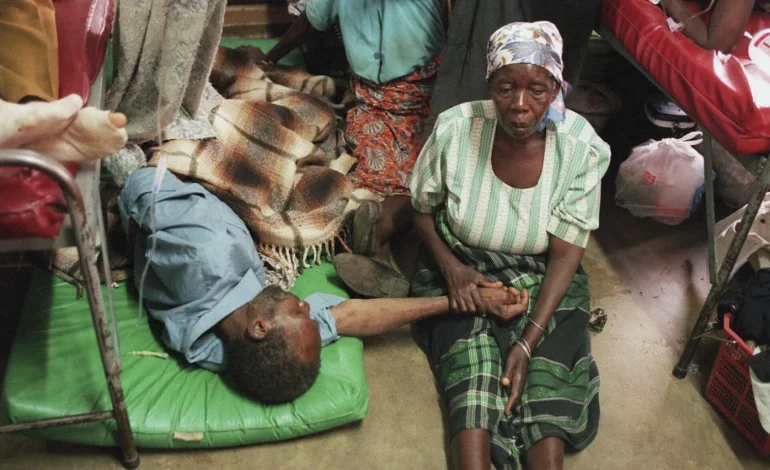A generation has passed since the peak of AIDS-related deaths, when the world witnessed devastating losses due to infections that the body would otherwise fight off, the Associated Press reports.
The crisis led to widespread advocacy, prompting governments to take action. One of the most significant responses was PEPFAR (the President’s Emergency Plan for AIDS Relief), a US-led initiative that has helped millions of people manage HIV for over two decades.
However, recent changes in US foreign aid policy have disrupted funding, leading to uncertainty in global HIV treatment programs. Health experts warn that without urgent intervention, the progress made in controlling HIV could be reversed, potentially leading to millions of preventable deaths in the coming years.
HIV, the virus that causes AIDS, is primarily spread through bodily fluids such as blood, breast milk, and semen. Over time, the virus weakens the immune system, leaving the body vulnerable to infections. The widespread availability of antiretroviral therapy (ART) has made it possible for people with HIV to live long, healthy lives.
However, disrupting HIV treatment has serious consequences. When antiretroviral drugs are stopped:
- HIV levels increase rapidly: The virus begins multiplying again within weeks, becoming detectable in the bloodstream. This not only affects the health of the person but also increases the risk of transmitting HIV to others.
- The immune system weakens: Without medication, the body becomes more susceptible to opportunistic infections such as tuberculosis, pneumonia, and fungal diseases.
- Drug resistance can develop: If treatment is interrupted and later restarted, HIV may become resistant to certain medications, making it harder to control.
- Progression to AIDS accelerates: Over time, untreated HIV leads to AIDS, the final stage of the disease. Without treatment, people with AIDS typically survive for about three years.
The impact of treatment interruptions is particularly concerning in countries with high rates of HIV. For example, South Africa, which has one of the world’s highest HIV burdens, also faces high rates of tuberculosis, a leading cause of death among people with untreated HIV.
In many African countries, PEPFAR-funded clinics and programs have already been affected. Reports indicate that some clinics have been forced to turn away patients, while health workers have been laid off, leaving gaps in HIV testing, education, and support services.
The United Nations AIDS agency (UNAIDS) has warned that up to 6.3 million AIDS-related deaths could occur in the next five years if treatment access continues to decline. Additionally, without proper intervention, more children could be orphaned, echoing the early days of the AIDS crisis.
For decades, consistent, daily medication has been emphasized as the key to controlling HIV. Now, many individuals face uncertainty about whether they can continue their treatment.
Rebuilding disrupted health systems and restoring access to treatment will take time. Health experts stress that every day without medication increases the risk of irreversible health decline. Additionally, new drug-resistant strains of HIV could emerge, making future treatment even more challenging.
As international organizations and governments work to address these challenges, the situation highlights the fragility of global health progress. While HIV remains a manageable condition, access to consistent treatment is essential to prevent a return to the devastating losses seen in past decades.










The latest news in your social feeds
Subscribe to our social media platforms to stay tuned